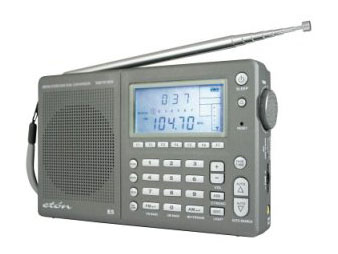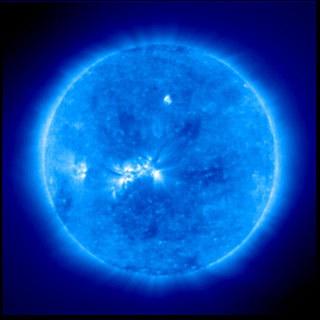My parents bought me a shortwave radio for my last birthday. It’s a Grundig/Eton G5/E5. This little beauty-

A scanner is great for spying/listening to things going on within about a hundred miles of where you are, but to listen to worldwide broadcasts in the HF bands you need a radio that can tune a lot lower than 25MHz – where most scanners bottom-out.
The E5 goes from 1711 to 29999 KHz and it’s a pretty capable radio. The problem is, I haven’t really used it much. Shortwave signals propagate the best once the sun’s gone down – and I’m in bed. I’m not much of a night person. I go to bed around 9 or 10 so I haven’t really had much of a chance to tune around the dial looking for anything more than manic preachers broadcasting from islands in the south Pacific.
That’s all about to change.
Sunspots all but disappeared during the month of December and it’s looking very much like the bipolar sunspot observed six days ago marks the beginning of solar cycle 24!
Pictured below is “NOAA Active Region 980,” also known as the last sunspot of solar cycle 23.

This means that for the next eleven years or however long cycle 24 lasts, radio signals will extend much farther than they have in more than a decade…followed by another eleven years of spotty coverage.
The SSRC even says we can expect global cooling – 20 to 30 years of extreme cold – based on previous observed patterns. Iiiiii don’t know about that though…
This could make for some interesting listening in the coming months…if I’m not too busy changing diapers.
